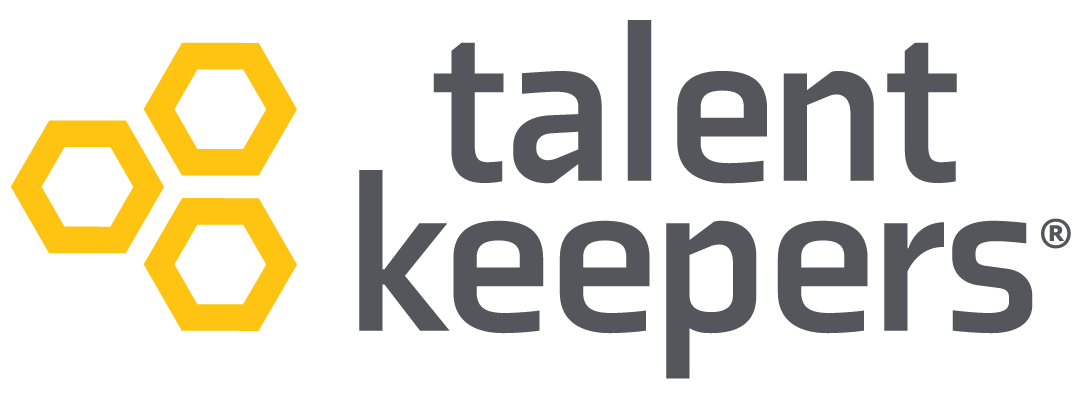Employee engagement is the measure of connection that a person feels with their organization’s goals and values and commitment to their work. Employee engagement is important because it contributes to higher productivity and fosters a positive workplace culture. Tools like engagement surveys, lifecycle surveys, and leadership coaching can effectively improve employee engagement.
What is Employee Engagement?
While there are slight differences in how employee engagement is defined from one source to the next, it is essential that employee engagement reflects the strength of an employee’s relationship with their company. It does not measure job satisfaction, well-being, or even happiness.
It is possible for an employee to feel satisfied with their job, and yet they may need a higher level of engagement with their organization. You may find that you have employees who are happy with their job but also exhibit signs of low employee engagement.
While an engaged employee will have a positive opinion of their company and aim to further its organizational goals and progress, a disengaged employee will be disconnected from these efforts and have a negative opinion of their workplace. Both employees can still do their jobs and even like what they do, but their level of investment in the company is vastly different. There are levels of progression with employee engagement, from highly engaged to disengaged.
| Levels of Employee Engagement | Description |
| Highly Engaged | Has a high opinion of their workplace, feels connected to their team members, and strives to help the company succeed. |
| Moderately Engaged | They have a moderate opinion of their workplace and are less likely to seek more responsibility. |
| Barely Engaged | Feels indifferent toward their workplace, lack motivation, and do just enough to get by. |
| Disengaged | Has a negative opinion of their workplace, needs to be more connected to the organization’s goals and values, and may underperform. |
Why Is Employee Engagement Important For A Business?
Employees who are highly engaged with your organization are more invested in supporting the company’s mission and will place more effort into helping it attain its goals. They want your company to succeed and take pride in their role in that success.
When employee engagement improves, so does business. Highly engaged employees are your best resource and can give you a competitive advantage in your market. The outcomes are undeniably positive when organizations use an engagement solution like TalentWatch to improve employee engagement. For example, AT&T partnered with Talent Keepers to increase engagement and reduce employee attrition. The results? In one year, the attrition rate dropped significantly, and sales performance increased to one of the best in the region.
Investing in tools such as engagement surveys, feedback channels, and leadership coaching is the most direct path to boosting employee engagement. Using these tools, you can create a positive workplace culture that inspires your team members to connect while nurturing their desire to promote the company’s success.
Benefits Of Employee Engagement
There are many benefits for a company that enjoys high employee engagement. When your employees feel connected to their organization and work to help it meet its goals, everything from performance to retention and customer satisfaction will improve.
- Employee Performance Improvements:Highly engaged employees are more productive, have lower absenteeism, and have less burnout. They are more likely to volunteer for additional responsibility and seek career advancement in your company. They also motivate their team members to strive for higher performance.
- Increased Employee Retention and Loyalty:Engaged employees are less likely to seek other employment opportunities. Because they are invested in their organization’s progress and success and committed to their team members, they won’t be easily swayed to leave for another company.
- Better Organizational Culture:When your teams see company leadership following up on employee engagement feedback, they will feel valued and heard. This sets an excellent foundation for a positive workplace culture.
- More Creativity and Innovation:Team members who are supported and engaged are more likely to demonstrate higher levels of creativity and innovation. They may feel more comfortable and be more motivated to suggest “outside of the box” solutions.
- Improved Customer Satisfaction:Improved customer satisfaction is a direct result of having highly engaged employees and low organization turnover. Engaged employees will be more invested in customer care and are more likely to go above and beyond to ensure a great customer experience with your company.
Who Should Drive Employee Engagement?
Four drivers will affect employee engagement at your organization. All four drivers need to be in action to achieve an overall high level of engagement among your team members. You can only achieve high engagement by making efforts in each area.
| Employee Engagement Drivers | Description |
| Organizational Factors | Organizational factors include the perception of senior management, the organization’s vision and mission, reputation, policies and procedures, culture, and environment. |
| Job/Career Satisfaction | Job and career satisfaction components include clarity of job roles, job responsibilities, accountability for goals, opportunities to utilize skills, and chances for career growth. |
| Coworker Relationships | Coworker relationships are team-based relationships, including peer support and everyday work interactions. |
| Credible Leadership | Credible leadership involves immediate managers’ engagement of team members, including communication, trust, coaching, and recognition. |
The Role Of The Employees
Employees need to support the engagement process of the organization for the best outcomes for themselves and the company. They can do this by honestly sharing feedback, offering solutions, supporting their team members, and recognizing their roles.
Honest feedback provided through engagement tools such as employee engagement surveys or feedback channels is critical. The organization can address workplace challenges or issues if thoughtful, honest feedback is provided. They must be active participants in the solutions process as well.
Leadership’s Role
Leadership in your organization has a responsibility to support engagement initiatives. They can do this by creating safe opportunities for employees to offer feedback and engaging with the process at each stage.
Leaders must demonstrate the desired behaviors they wish to cultivate among their employees. They also need to practice excellent communication throughout the engagement process. Leaders should share the feedback with all team members for transparency. And then, they need to share what action is to be taken – or communicate why it may take some time to implement the best action plan.
The Role Of Human Resources
The HR department in your organization is the vital link between leadership, managers, and employees. They put the action strategies into place and ensure all team members understand the process.
HR should align the engagement process for every level within the organization. They will ensure that leadership understands how the process will help the company progress and help other teams hold accountability for their part.
One of HR’s biggest roles is to select the engagement tools that will be used and to help design the employee engagement strategies that the results from feedback and surveys will inspire.
Creating An Employee Engagement Action Plan
To create an effective employee engagement action plan, you want first to determine your objectives and collect employee feedback. Once you have these, you can outline your strategy, communicate it to your teams, and set your plan in motion.
1- Determine Your Objectives
Objectives will look different from one company to another, depending on the organization’s goals. Your objectives include achieving better morale, improving productivity, or increasing employee retention.
2- Get A Pulse On The Current State Of Employee Engagement
Gather feedback from your employees to determine the level of engagement within your organization. The benefits of employee engagement surveys, such as building trust and helping executives understand employee needs, are invaluable at this stage.
Pulse surveys and lifecycle surveys are key tools to support engagement efforts at various stages of the employee journey with your company. Focus groups and team meetings are a great way to gather feedback on specific topics. And live feedback channels will offer your employees a confidential and anonymous opportunity to share candidly.
3- Outline How You Will Execute Your Strategy
You can start by setting short- and long-term goals using your gathered feedback. Once you have your targets, you can select the tools that will best serve to achieve them. It’s important to determine at this stage how you will measure the success of your engagement efforts.
4- Communicate Progress And Take Action
To ensure transparency throughout the engagement process, you must communicate clearly at each step and across all channels. With this, your efforts may be positively impacted, and you could gain employee trust. Leaders should incorporate feedback into their teams and demonstrate their commitment to the process.
Establishing a timeline for your engagement plan and sharing it with your employees may be helpful before you begin the process. Having your employees aware of the steps and when they are expected to take place can alleviate concerns about where you are in the process. And it will provide a general idea of when to expect communications at the various stages.
As you roll out your action plan, if any significant changes or delays must occur, it’s important to communicate them promptly and clearly. By keeping the lines of communication open, you’ll continue to build trust and encourage engagement!







